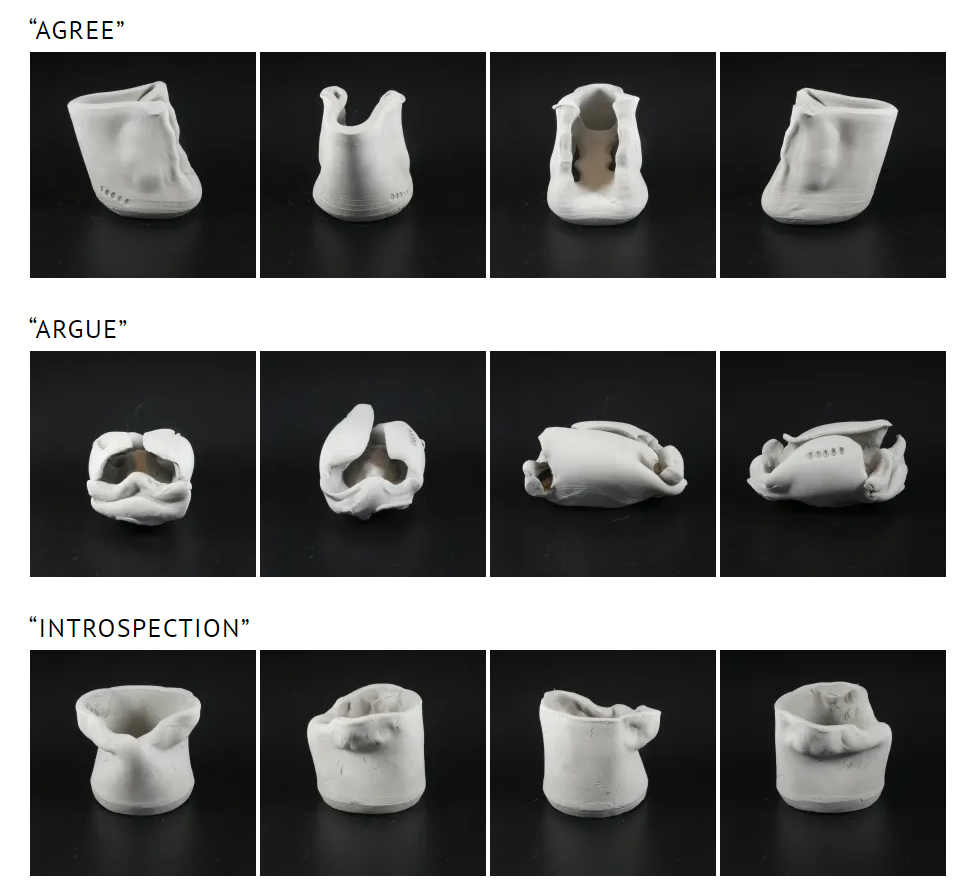Kinds of conversation: making the intangible tangible
How can researchers enable the public to experience a conversation in a different and more immersive way and to communicate concepts of support and kindness through visual, embodied language?

People with hearing often assume that audible language is all that inter-human conversation offers. However, for over 200 years, a community of ‘visual humans’ – deaf people, or those who experience the world in a predominantly visual way and who communicate in one of the world’s natural, visual, sign languages – have sought to persuade the hearing world of the extraordinary potential of a language made of light, crafted by motion, and captured through vision. Such a language is not merely a surrogate for speech, but a rich alternative that not only provides ways to overcome barriers that spoken languages impose but is holistic in its harnessing of the entire body in communication and meaning.
What did the project involve?
The overarching aim was to enable the public to experience a conversation in a different and more immersive way and to communicate concepts of support and kindness through visual, embodied language. To achieve this, the project sought to:
- Foster a sense of community with a collaborative approach inviting the public to contribute their words to the work and deaf contributors to engage with the researchers throughout.
This project drew together academics, technologists, artists and created opportunities for members of the public with an interest in sign language to come together, encounter sign language, and engage in ‘conversations about the links between the different communities and the role of technology.
The team considered a variety of technologies such as robotic devices (wearable sensory hand exoskeletons and visual tracking devices to enable gesture, face, hand and finger motion tracking), machine learning and creative materials. such as 3d printing, video display, recycled materials and ceramics. Using prior work as a starting point, the team explored ways of communicating without sound, and possibilities for improvement on the prototypes.
The goal was to initiate a discussion about the role and place of future communicative technologies. Members of the deaf community were invited to take part in workshops, centred around technology and sign language, to give feedback on the project’s aims, progress and deliverables and take active part in creative explorations. These workshops facilitated the dialogue between researchers and deaf community, opening opportunities for further future interaction and impact. The workshops were as follows:
Workshop 1 (November 2021):
Introduce the project and the team, create a safe space, introduce a variety of technologies, capture gut feelings from hearing and deaf about the tech/process/project, explore creative methods of making features of a unique visual language and culture visible, accessible and permanent. Participants produced movements which were recorded and converted into a permanent artwork-memoire of this interaction.
The artist Lisa Cole has written an informative and detailed blog capturing the process and outcomes of this workshop called ‘Tangible Conversations: Permanent records of British Sign Language‘. In this blog Cole thoughtfully describes the events and results of the workshop:
“Our first Tangible Conversations workshop was held in a light bright room and included 4 hearing non signers, 4 hearing signers (including 2 professional interpreters) and 2 members of the signing deaf community. My role was to design creative activities that could go some way towards capturing a feeling/word expressed with non verbal communication. I threw a series of clay cylinders and invited signers and non-signers to imprint them with signs.”

Fired Clay Cylinders from Workshop 1
Please visit Lisa Cole’s blog to read about the workshop in greater detail.
Workshop 2 (April 2022):
Revisit project, further the discussion with more members of the public and look at future aims. Capture and carefully explore reaction from both deaf and hearing participants, and by so doing, begin to unpack some of the most difficult and emotive areas of the relationship between the deaf community and academic/technical/hearing world ‘experts’.
Who are the team and what do they bring?
- Antonia Tzemanaki (Mechanical Engineering, University of Bristol) is a robotics expert. Her vision is to utilise robotic technologies to benefit users and allow for inclusivity in the society, expanding on the many possibilities that they offer including teleoperation, haptics, assistive, soft and wearable technologies.
- Mike Gulliver (History, University of Bristol) is a trustee of the Deaf Studies Trust; he is hearing, signs, and has worked with deaf people for over twenty years, while much of his work has focused on why signing deaf people would be better understood as an indigenous or linguistic minority, rather than a disabled group. He is an expert on the ethics of deaf/hearing co-produced research, and on the future of deaf people’s relationship with technology.
- Martin Garrad (Engineering Mathematics, University of Bristol) is a roboticist interested in the design and control of soft and hard robots, with a particular emphasis on understanding how embodiment can simplify control and reduce the need for explicit computation.
- Lisa Cole specialises in drawing machines that capture the intangible. Her driving objective is to increase and enhance what we sense in the everyday world. Her practice revolves around exploring different methods of sensing the world around us.
What were the results?
The knowledge gained in this project will be used to create more interdisciplinary projects which will benefit both the hearing and the deaf community and conduct public facing workshops fronted by deaf people. The outcomes of the workshop have been beneficial in informing the practice of engineers and facilitating collaboration of multidisciplinary teams. Ideas captured will inform future proposals.

